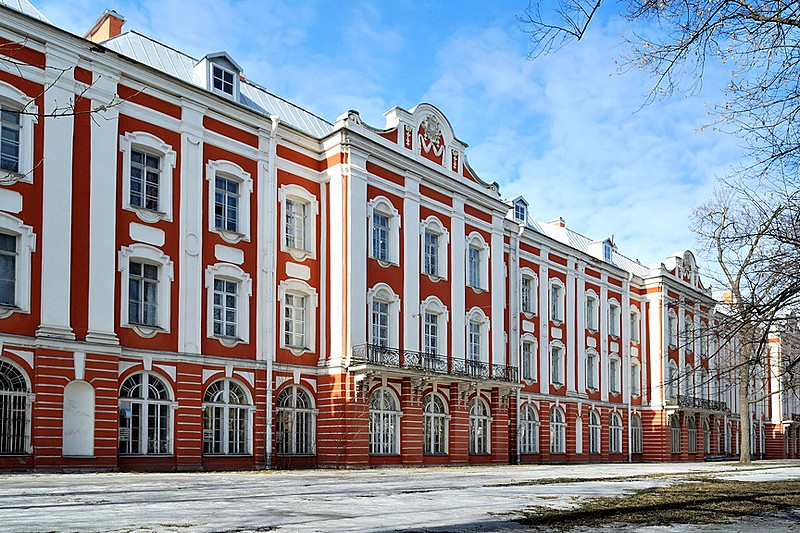St. Petersburg State University
This impressive red-and-white building stretches for 440 yards and actually consists of 12 buildings, standing side by side. It was built between 1722 and 1742, on Vasilievsky Island, and was intended to house the twelve government bodies of Russia (Peter the Great's Senat, Synod, and ten ministries - collegii). In 1835 the building (by that time standing empty) was given to St. Petersburg University and now serves as its main building.

St. Petersburg University was founded in 1819, though some local scholars suggest a much earlier date. One of the most prominent universities in Russia, it has received international recognition thanks to the chemist Dmitry I. Mendeleev (creator of the Periodic Table of Elements), the physicist Alexander S. Popov (who invented the radio simultaneously with Marconi) and many other major scholars. Among the alumni of the school were many important figures of Russian culture and politics: the writers Nikolai Chernyshevsky and Ivan Turgenev, the poet Alexander Blok, prime minister and reformer Pyotr Stolypin and the head of the 1917 Provisional Government, Alexander Kerensky. Even the great revolutionary Vladimir Lenin attended the university and passed his finals exams in the Law Faculty in1891.
Today, the university boasts over 20,000 students, 2,000 professors, 210 departments and a library with 4 million volumes. Eight Nobel Prize winners are graduates of St. Petersburg State University (including the biologist Ivan Pavlov, the economist Vasily Leontiev and the poet Joseph Brodsky).
Location: 7/9, Universitetskaia Naberezhnaia (Embankment).

